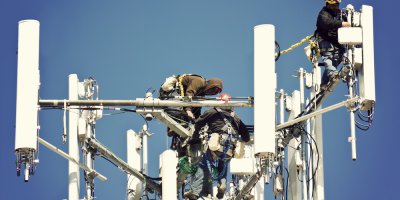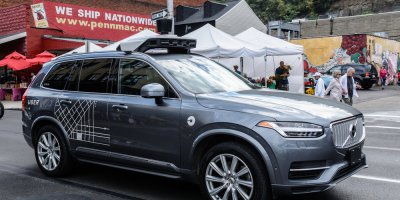
According to Spanish car maker SEAT, car manufacturers could be a big 5G consumer in the near future. Source: PAU BARRENA / AFP
Why car makers should invest in 5G
AFTER years of development, 5G technology is set to make its debut in selected parts of the world this year, bringing businesses closer to unprecedented network speed and along with it, increased connectivity.
Often referred to as transformative technology, 5G is expected to influence and determine the development of other technologies, particularly IoT, whereby it promises to link everything from common household devices to sensors on vehicles to unlock next level of automation.
Accordingly, car manufacturers are expected to be a significant consumer of the next-generation network, said Spanish car-maker SEAT recently, in justifying investments in the technology.
However, for the technology to really take off, there has to be more innovation, according to SEAT CEO Luca de Meo who said that the use case of 5G in the industry is limited at the moment.
De Meo, who unveiled Europe’s first 5G connected concept car at the Mobile World Congress in Barcelona said that integrating mobile phones, and various external infrastructures and retailers to a vehicle could potentially generate billions of business transactions.
“I think personally the automotive industry will play a big role in justifying the investment, so we will be one of the big customers, but we need to be creative,” De Meo said.
“We need to experiment and look at functionalities, and hopefully the market will say, OK, I want to buy a car like this because it can prevent an accident or it can see around the corner, and I value that and I (will) pay for it.”
The rise of self-driving cars
As the cost of sensors is also on the decline, 5G is expected to play a significant role in the development of autonomous vehicle – a market that will be worth as much as US$95 million by 2020.
But, according to De Meo, ethical issues, infrastructure uncertainties, as well as the challenges of sharing roads with traditional cars, will slow the growth of the driverless vehicle market.
Nonetheless, SEAT is optimistic. It is expecting the next iteration of the motorcycle-like Minimo concept car where the passenger sits behind the driver will be capable of level 4 (L4) autonomous driving in the city.
A car has more #software code than an airplane and when #connectivity and #autonomous driving kicks in, that number will increase. Software must be a core competence so we’re creating a Software Development Centre in #Barcelona. #SEAT #MWC19 #MWC @GSMA ➡️ https://t.co/ncE035cQ4p pic.twitter.com/w7OhtwqPpa
— SEAT Official (@SEATofficial) February 25, 2019
De Meo is also betting big on car sharing platforms and added that the cost of car ownership could be reduced by 50 percent if vehicles did not stop moving.
The company trialed sensor technology that involved installing thermal cameras on stop lights, which could detect pedestrians and transmit the data to its connected cars.
A car could produce data that that could equivalent to as much as 3000 smartphones and thus should one of the core pillars of IoT, according to De Meo.
Regardless, while the general public could only witness 5G’s transformative potential in the coming years, enterprises should get a head start and invest in the technology.
At the very least, they should prepare their operations to be 5G ready, so they are not left behind to play catch up in the future.
READ MORE
- Safer Automation: How Sophic and Firmus Succeeded in Malaysia with MDEC’s Support
- Privilege granted, not gained: Intelligent authorization for enhanced infrastructure productivity
- Low-Code produces the Proof-of-Possibilities
- New Wearables Enable Staff to Work Faster and Safer
- Experts weigh in on Oracle’s departure from adland






